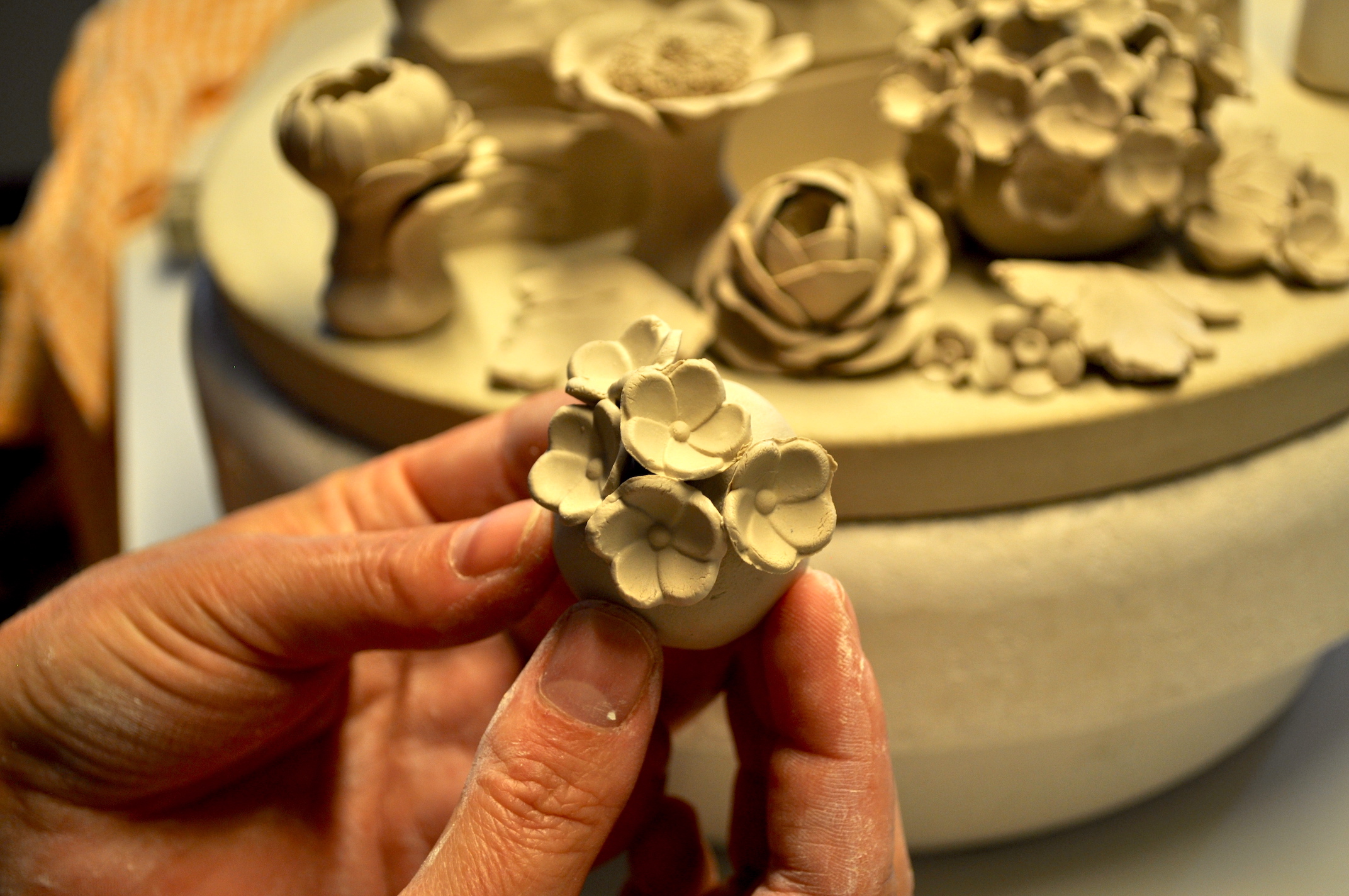In Germany’s easternmost state, Saxony, crafts have been major contributor to the economy. According to 2005 figures, one-third of eastern Germany’s (excluding Berlin) crafts and trades firms are located in Saxony. An approximate 95,000 craftspeople and traders were said to be in Dresden, Chemnitz and Leipzig in 1989-90. It is also estimated that one in every five labour in Saxony works in this industry.

Porcelain dreams
Meißen (Meissen), about 28 kilometres from Dresden, is where the first porcelain factory in Europe was set up. In 1710 Augustus the Strong founded the porcelain manufacturing unit with Johann Friedrich Böttger as his chief alchemist, who knew the recipe of this ‘white gold’—as porcelain was referred to then. Soon the logo—crossed swords—was developed to demarcate the original, high quality of Meissen creations. In the early 1860s the main production unit moved from Meissen’s Albrechtsburg Castle to Triebsch Valley.
Walking into the House of Meissen, which has demonstration workshops, the museum, a boutique shop and restaurant, unveils the spectacular Saxonia. Locally called Saxony’s Statue of Liberty, Saxonia is the largest free-standing porcelain figure in the world. Her gown is made of 8000 handmade porcelain blossoms. The jaw-dropping intricacy of the statue is just an initiation to Meissen’s par excellence craftsmanship.
Demonstration workshops give visitors an insight to the detailed work behind every piece of Meissen’s creation. The tour begins with the potter who shapes clay in moulds (with very fine relief work) and then sends it to the ‘bossierer’ or repairer, who smoothens and adds details to the fired clay. The bossierer also glues in delicate pieces to form the main body of the artwork. It then goes to the painter who draws before the product is glazed and concludes with colours and motifs on the overgrazed final product.
Visit: House of Meissen, Talstrasse 9, Meissen.

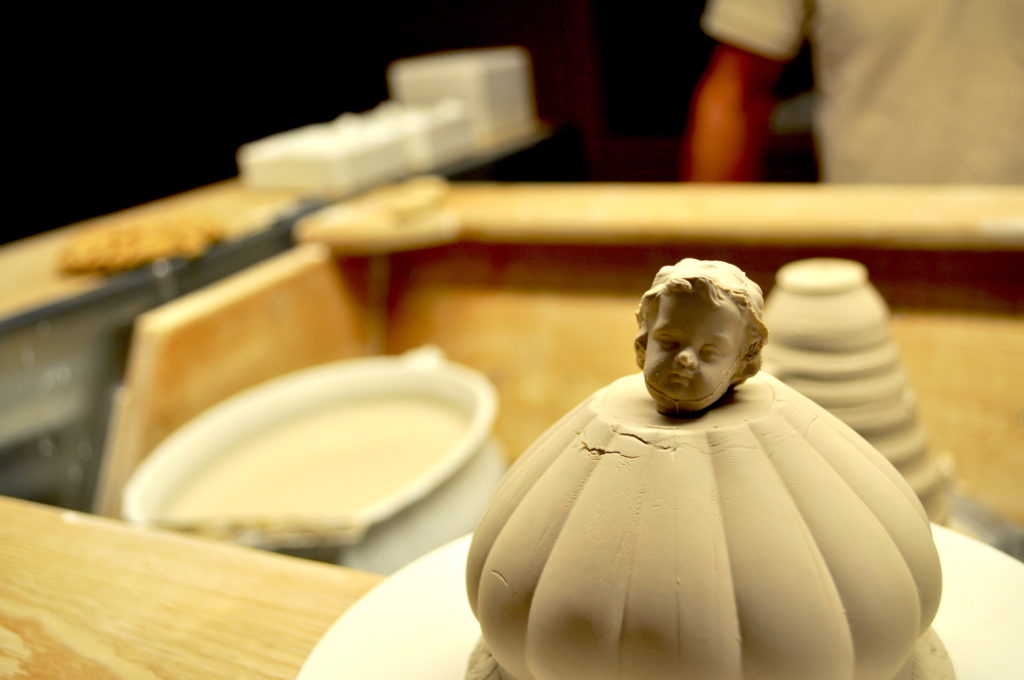
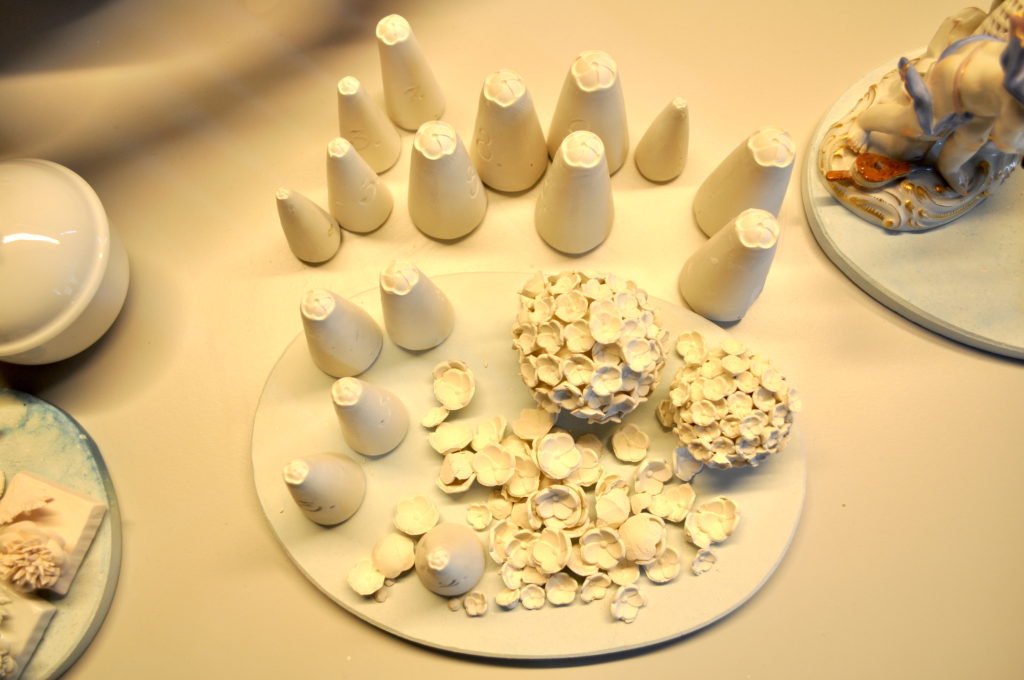
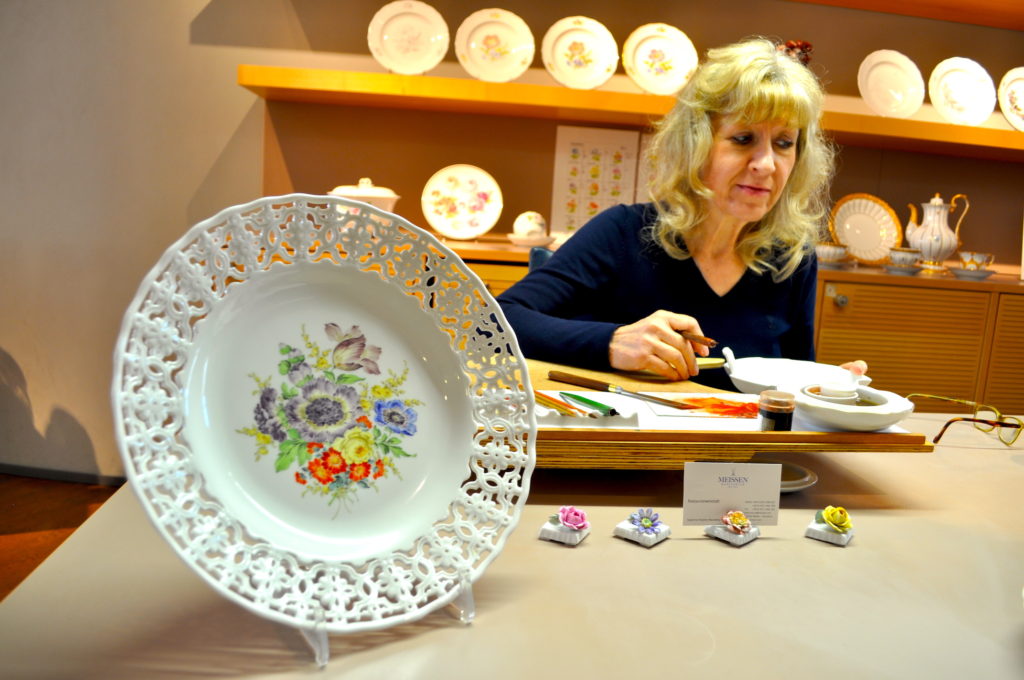
Wooden memoirs
Erzgebirge (Ore Mountains) forms a natural border between Germany and Czech Republic. In the 18th century, the mining industry in this easternmost part of Saxony, in and around Seiffen town, began plummeting and the people sought alternative means to livelihood. Their adeptness in wood carving as a hobby soon became a profession.
Seiffen, the last town on the German border, is a popular Christmas destination. The ubiquitous ‘nutcracker’ is the unofficial mascot of the region. The first nutcracker was produced by Friedrich Wilhelm Füchtner and named so because the figures crack nut with authoritarian expressions. Another popular wooden craft is the Räuchermann or the Christmas smoker, who is also seen on shop window displays. However, some products continue to keep the traditions of the mining industry alive, like the beautiful Schwibbögen or the Christmas candle arch that was first made with wrought iron. The Weihnachtspyramide (Christmas pyramid) is also an eminent product of the Erzgebirgewoodwork. Made in varying sizes, this propelling decoration has a rotating carousel and adorns every Christmas market.
Exploring Schauwerkstatt, literally translating to ‘demonstration workshop’, in Seiffen is a fascinating journey. The workshop is sequentially lined with craftspeople who carve, paint and assemble the famous nutcracker’s 35 pieces in 150 working steps.
In ‘toy town’ Seiffen, the Spielzeugmuseum (Toy Museum) narrates history of toy-making in the Ore Mountains. Even though the museum has information only in German, it is worth a stop to see the technique, precision and creativity of the toy-makers here.
Visit: Schauwerkstatt, Bahnhofstraße 12, Seiffen.


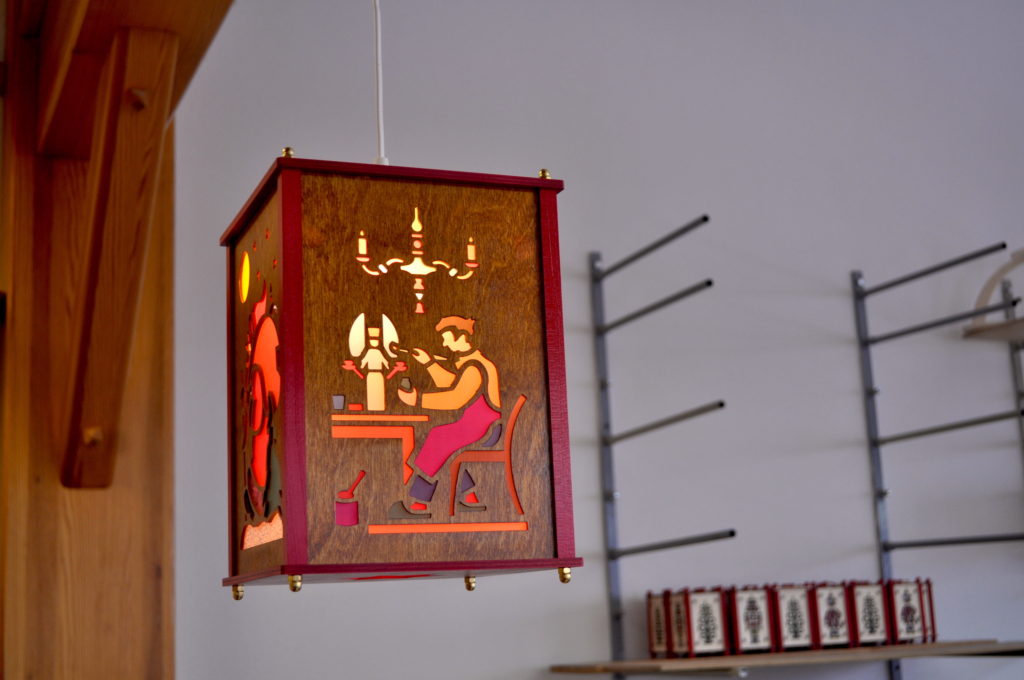

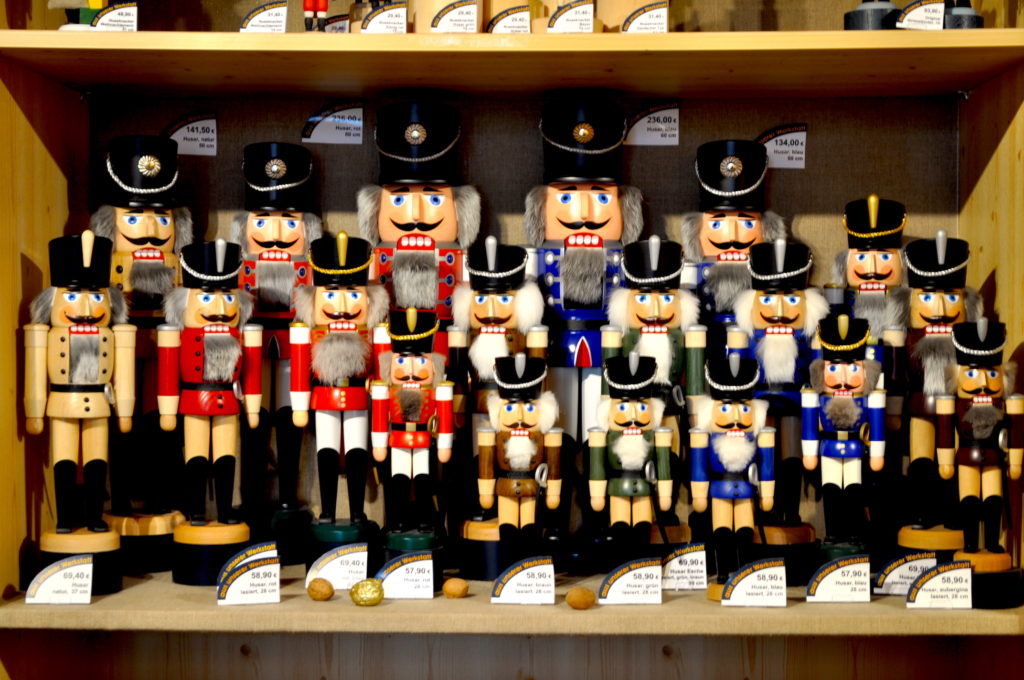
Ceramic touches
Not only does the landscape supersede in beauty along the German-Polish border, but the crafts also take an interesting turn.
Bunzlauer ceramics get their name from Bunzlau, which was an old Silesian town and is presently in Poland, called Bolesławiec. It was the well suited clay from the region that encouraged locals to learn in pottery and soon Bunzlau was called ‘potters’ town’.
Adapting to the changing times and industrialisation, Bunzlauer potters created a whole range of products from utilitarian items to mass produced decorative earthenwares. The art forms also subsequently evolved with contemporary influences. It was in the 19th century when the famous Pfauenauge (peacock’s eye) design was developed—which continues to grace most of the handcrafted products from here.
Görlitz, one of Saxony’s most beautiful towns, prides itself with charming Bunzlauer ceramics. Though these earthenwares can now be seen all over the state, it dominates this side of the state. Dresden houses many shops and workshops which sell these glazed clay as cups, bowls and other kitchenware and home décor items. In Görlitz, however, there a handful of shops.
Visit: Schlesische Schatztruhe, Brüderstraße 13, Görlitz.
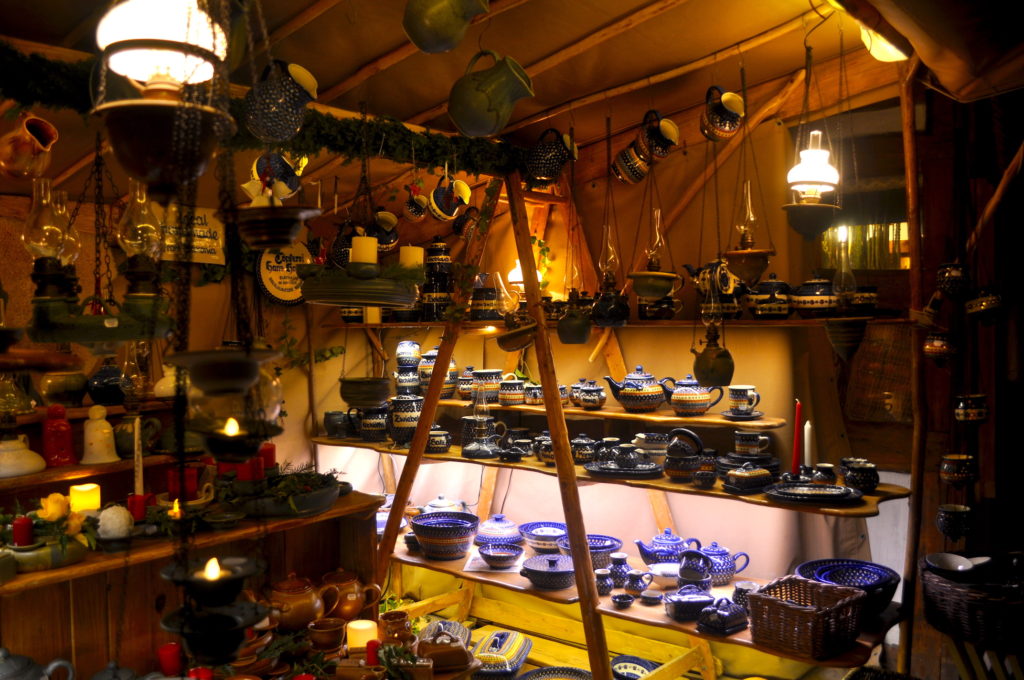
Starry nights
Moravian stars are seen in every Saxon town during winter. Sometimes, they continue through summer owing to the cryptic technicalities in assembling them. Popularly called Herrnhut stars, each star comprises 25 spikes (17 four-sided and 8 triangular) attached one the centre square frame. The bigger the star, the more complicated is the assembling process.
It was in Herrnhut, a small town about 110 kilometres from Dresden, where Protestants from Moravia sought refugee in the 18th century. And they brought in the tradition of hanging Moravian stars ahead of Christmas—inspired by the biblical story of the shining star above the stable in Bethlehem.
Today Herrnhut stars are available in 60 different varieties. It is still handmade using traditional paper which are used indoors, and waterproof plastic for the outdoors. Traditional Christmas colours—red, yellow and white—dominate the tones of these stars.
Visit: Herrnhuter Sterne (Moravian Stars Manufactory), Oderwitzer Strasse 8, Herrnhut.
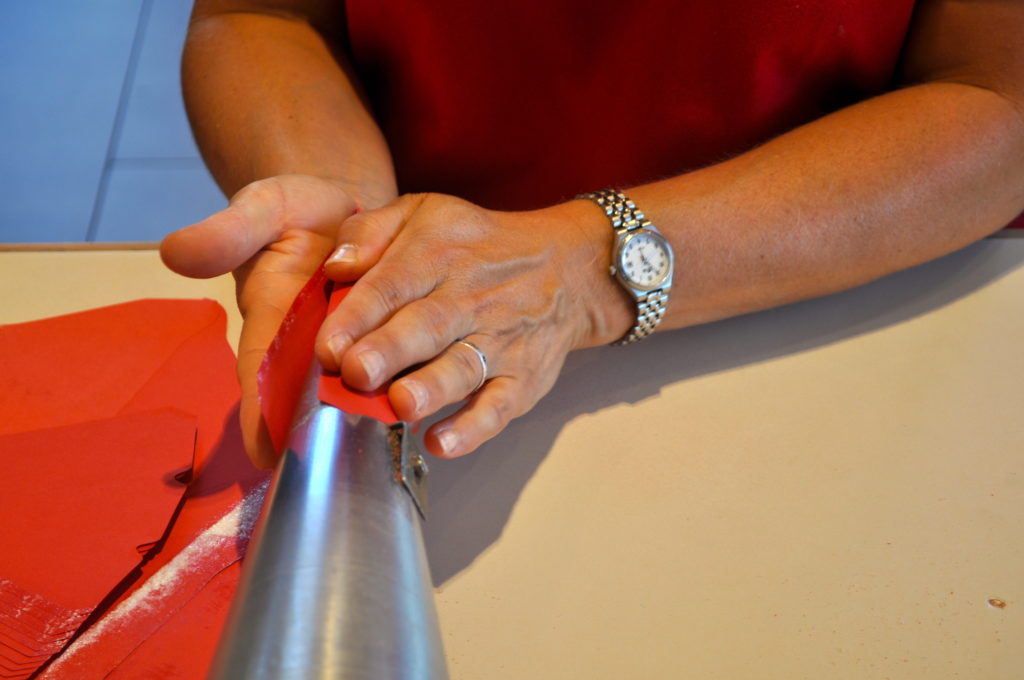



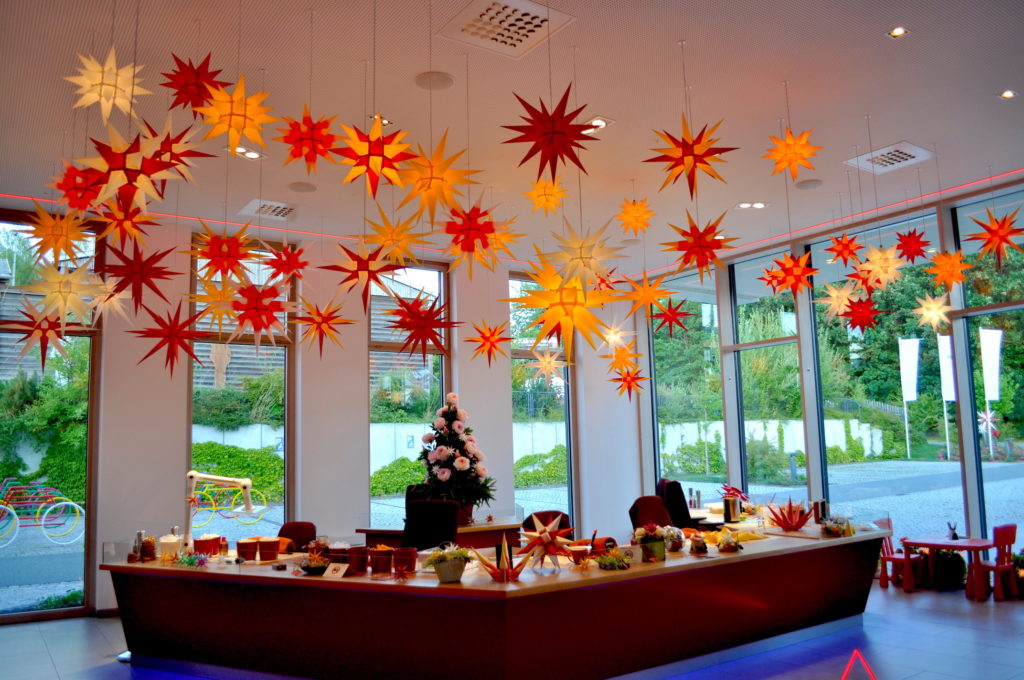
Best handmade souvenirs to bring home from Saxony:
-Apparels made by Plauen lace,
-Polished wooden angels from Wendt & Kühn,
-Watches from Glashütte,
-Tableware or artwork made of Meissen porcelain,
-Small assembled Herrnhut stars,
-Kitchenware or candle stands of Bunzlauer pottery,
-Wooden (miniatures of) nutcracker, angels and miners from Seiffen.
An edited version of this article appeared in Deccan Herald.
More travel photos on my Instagram feed.



